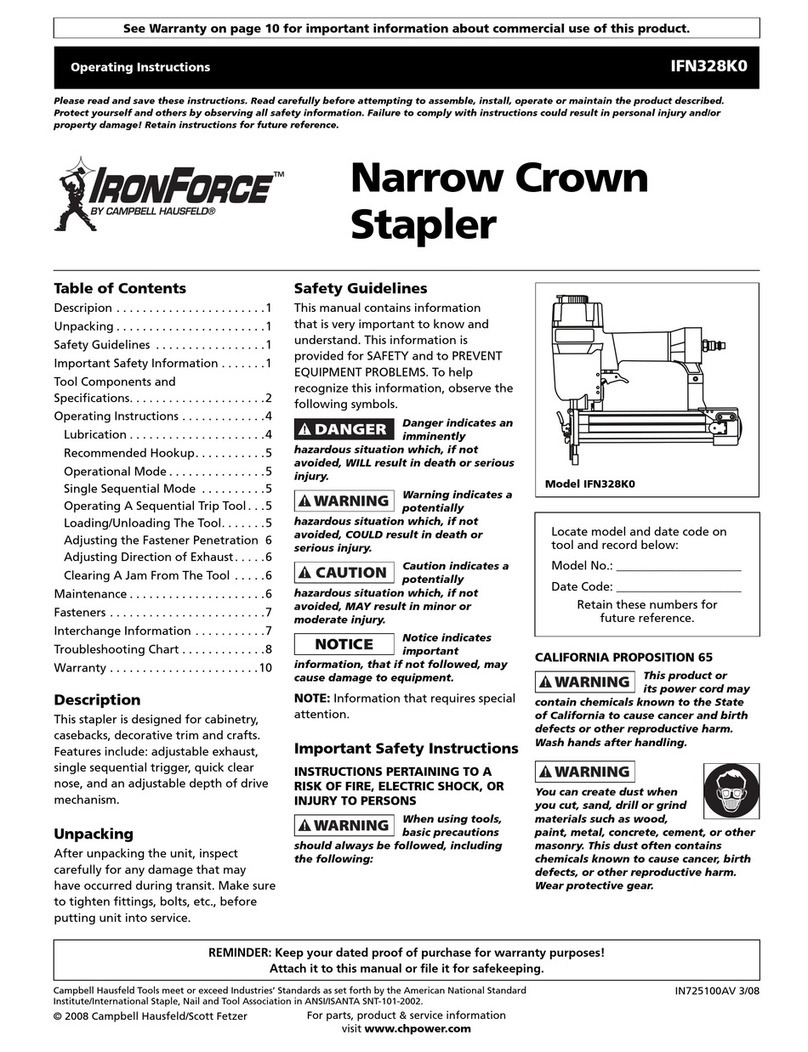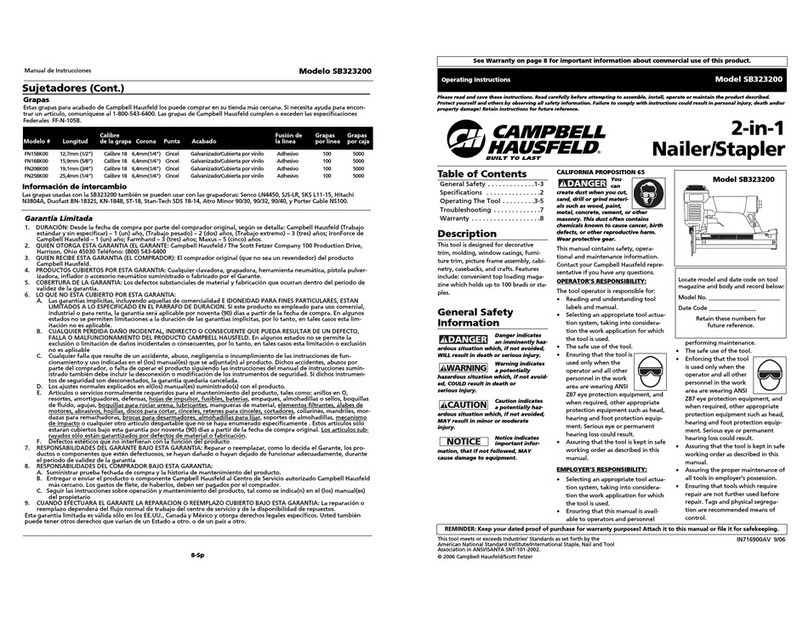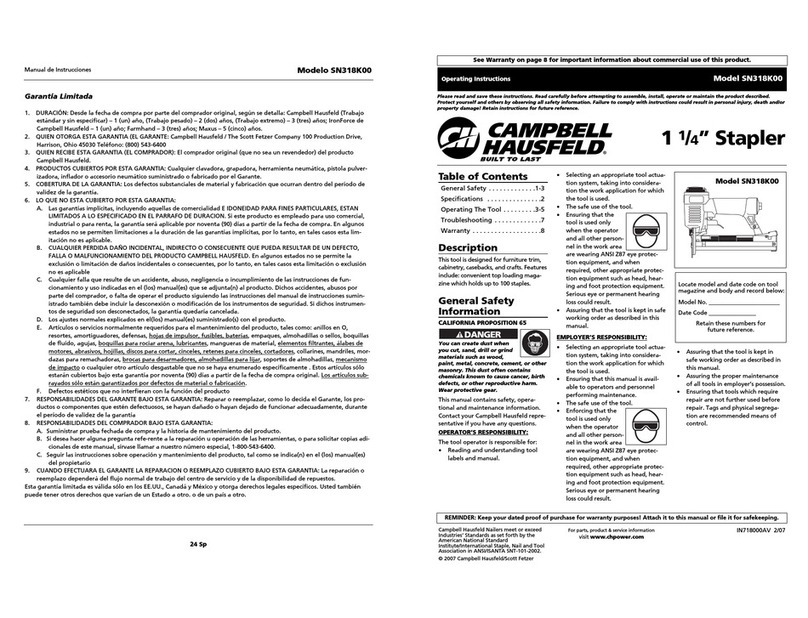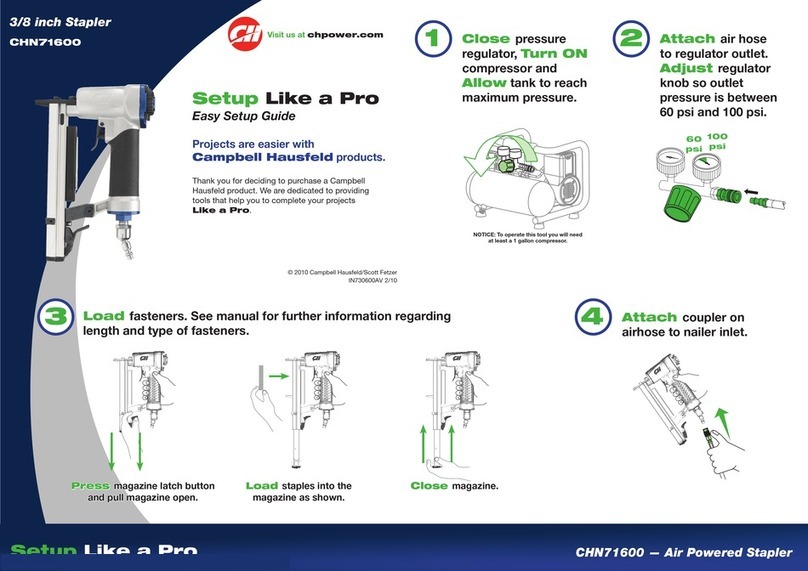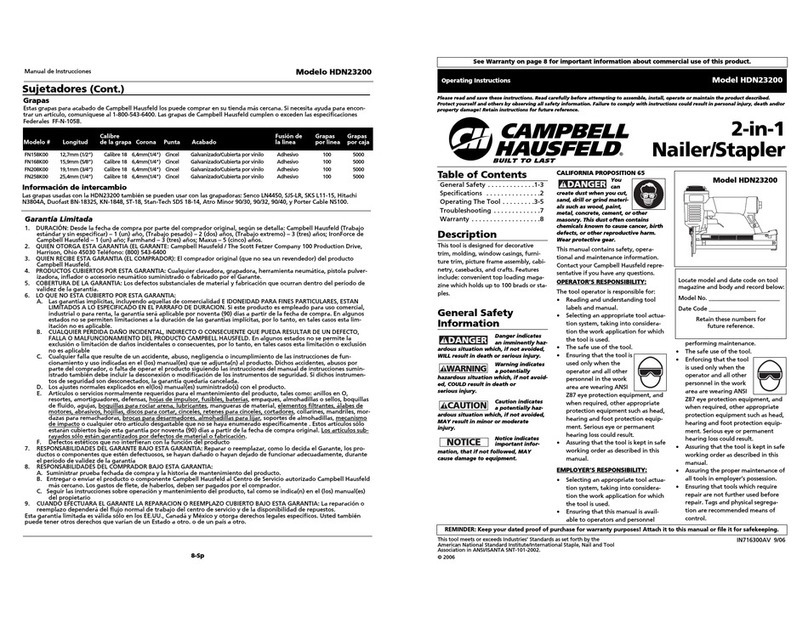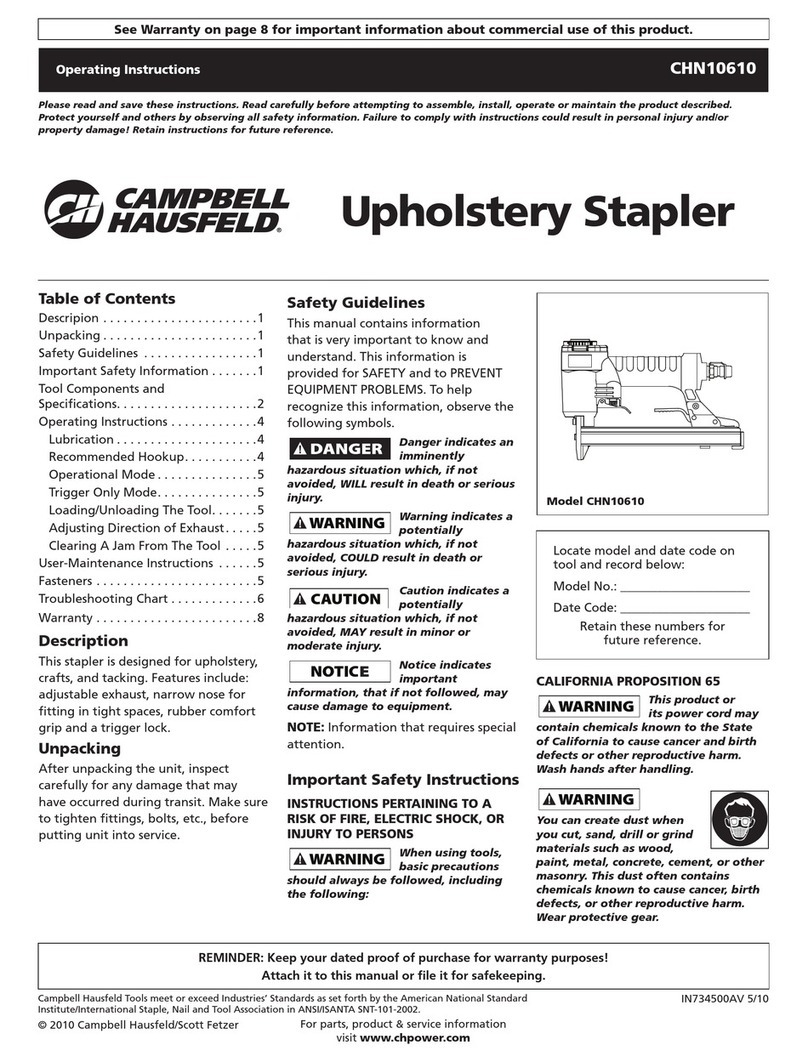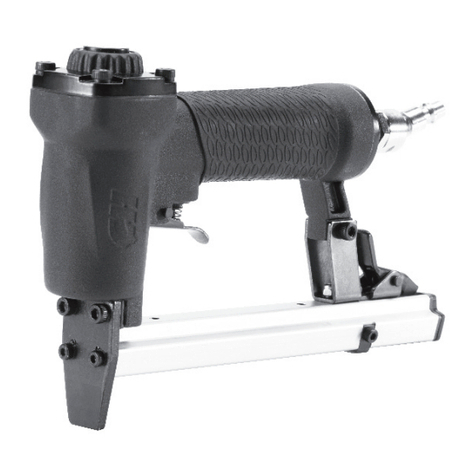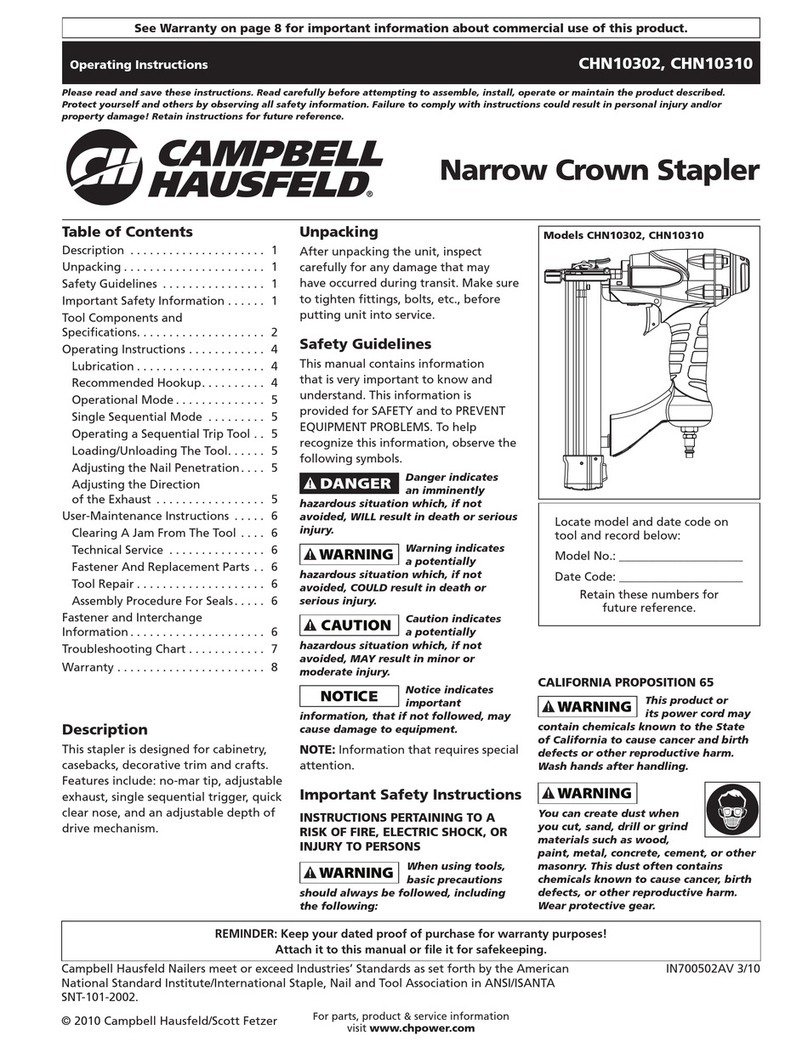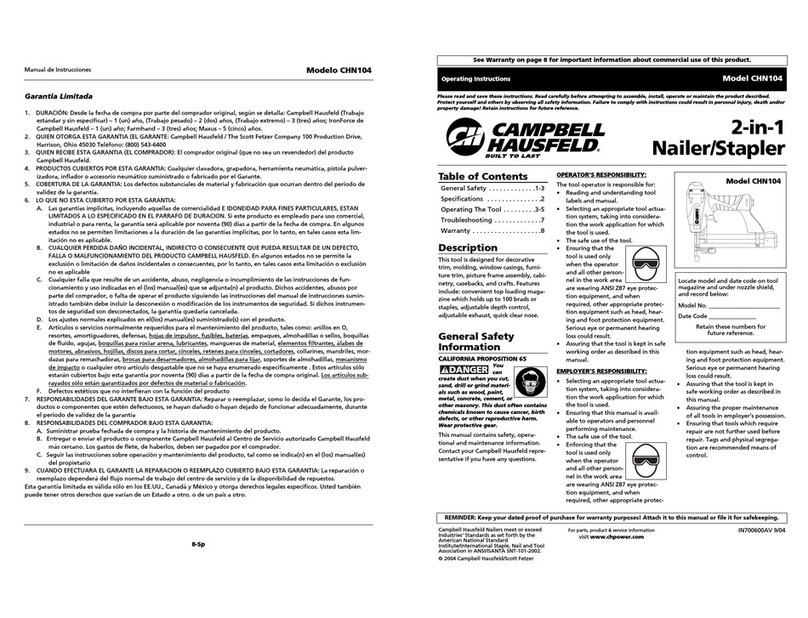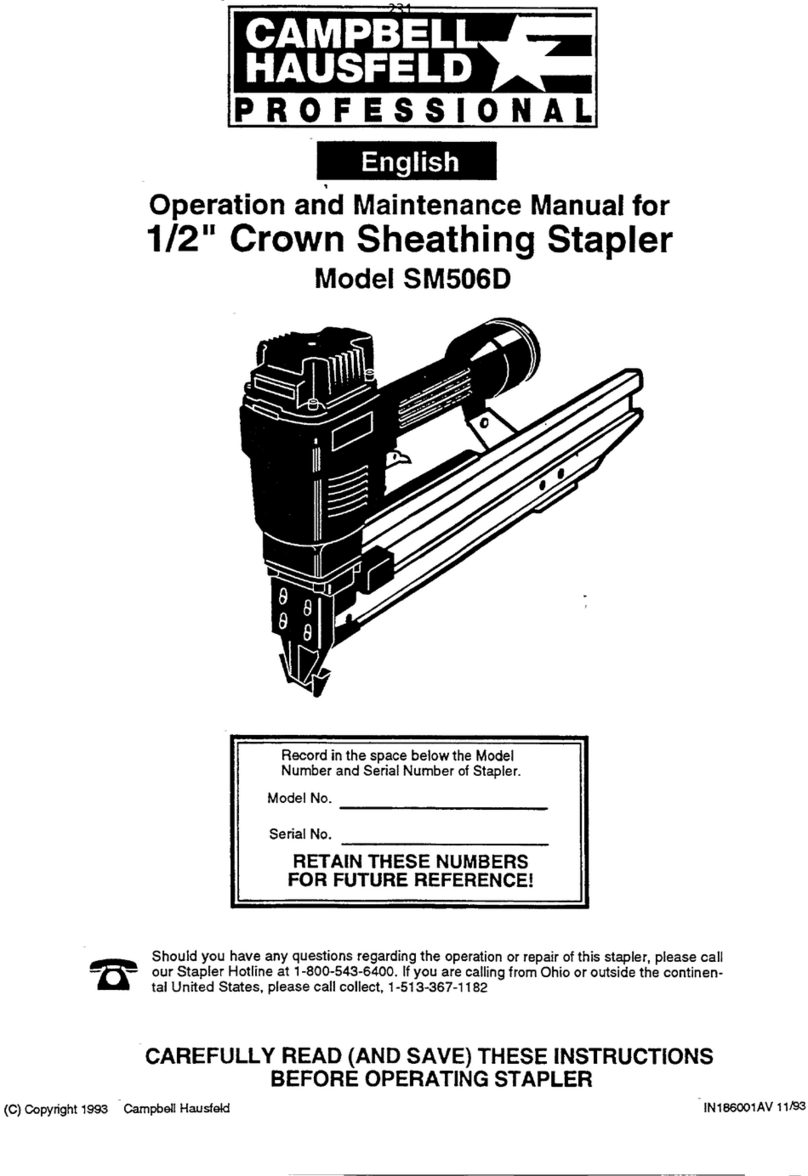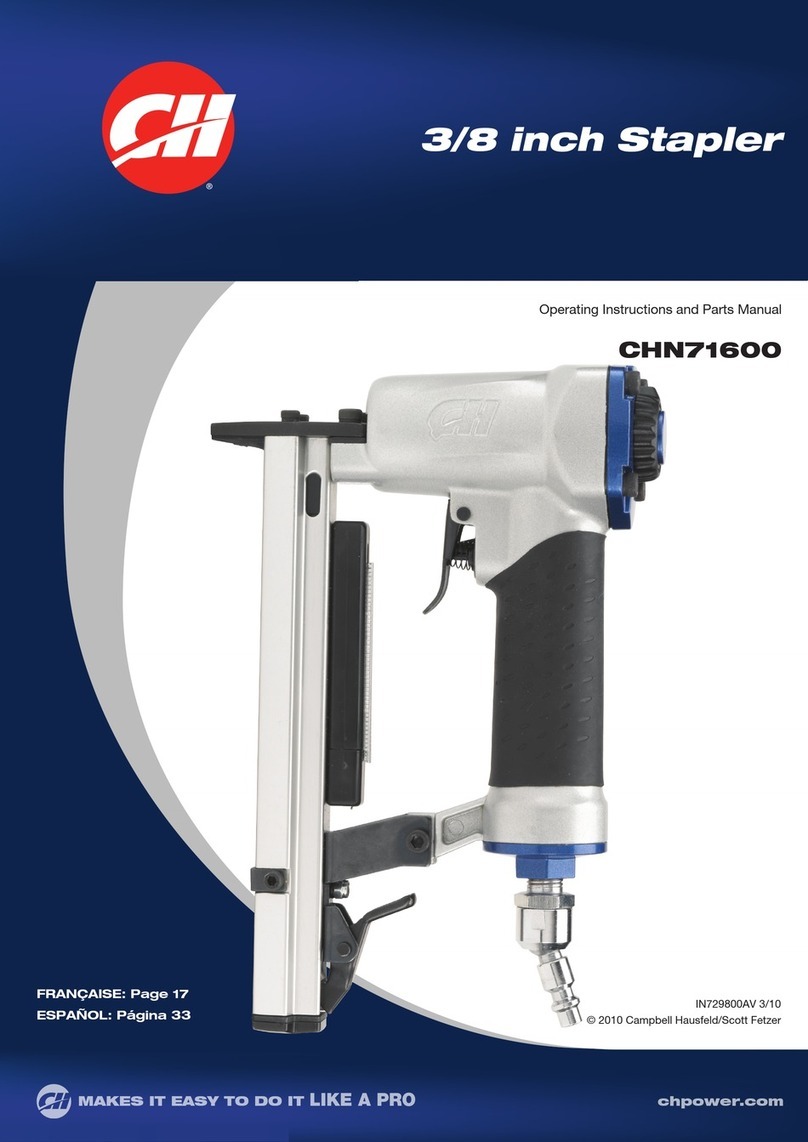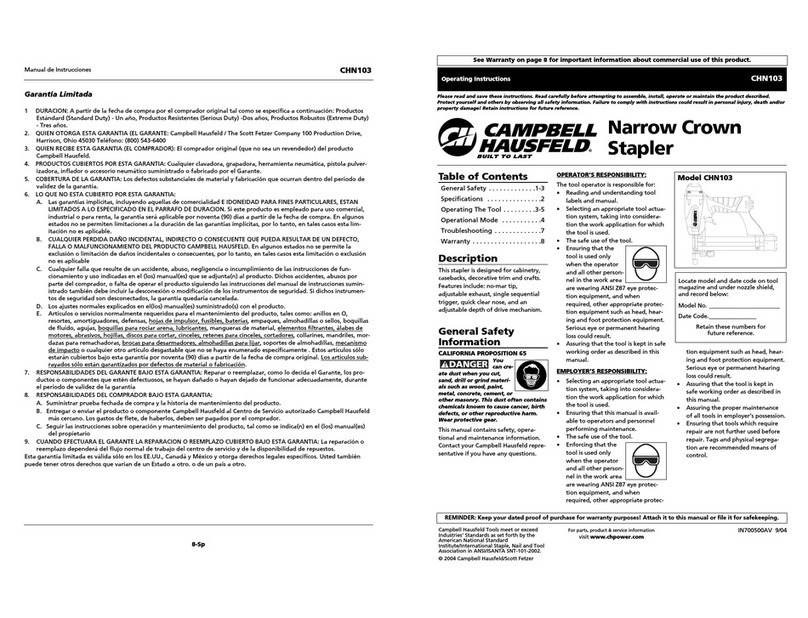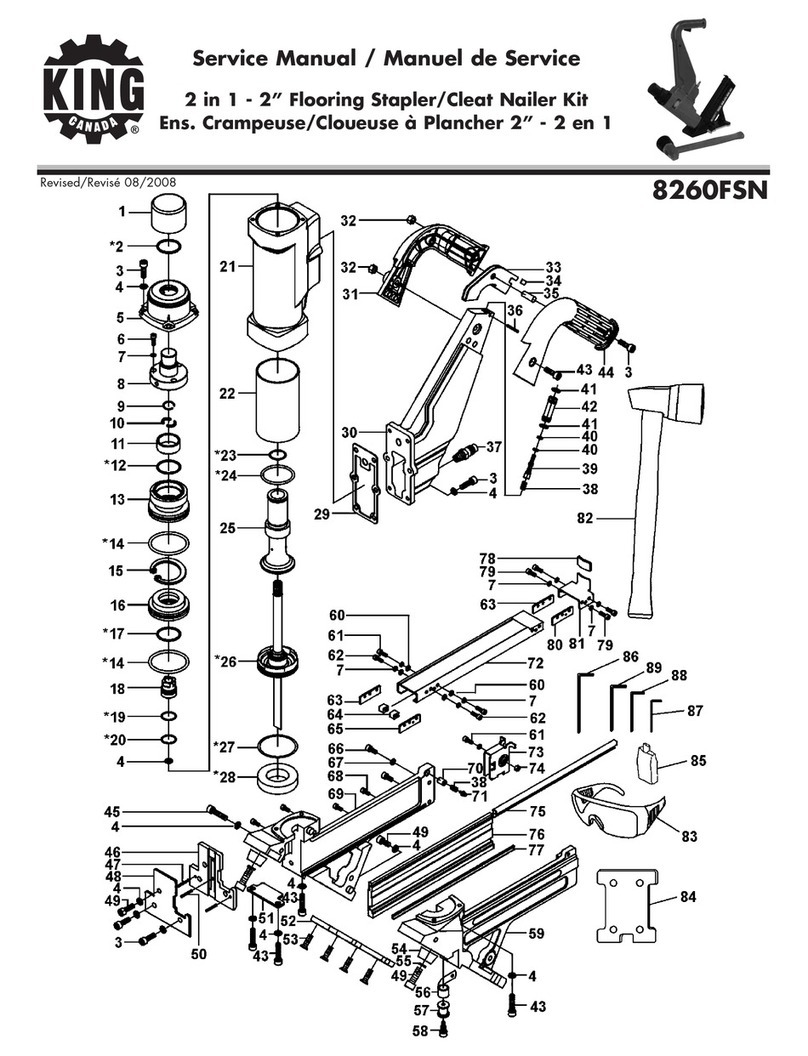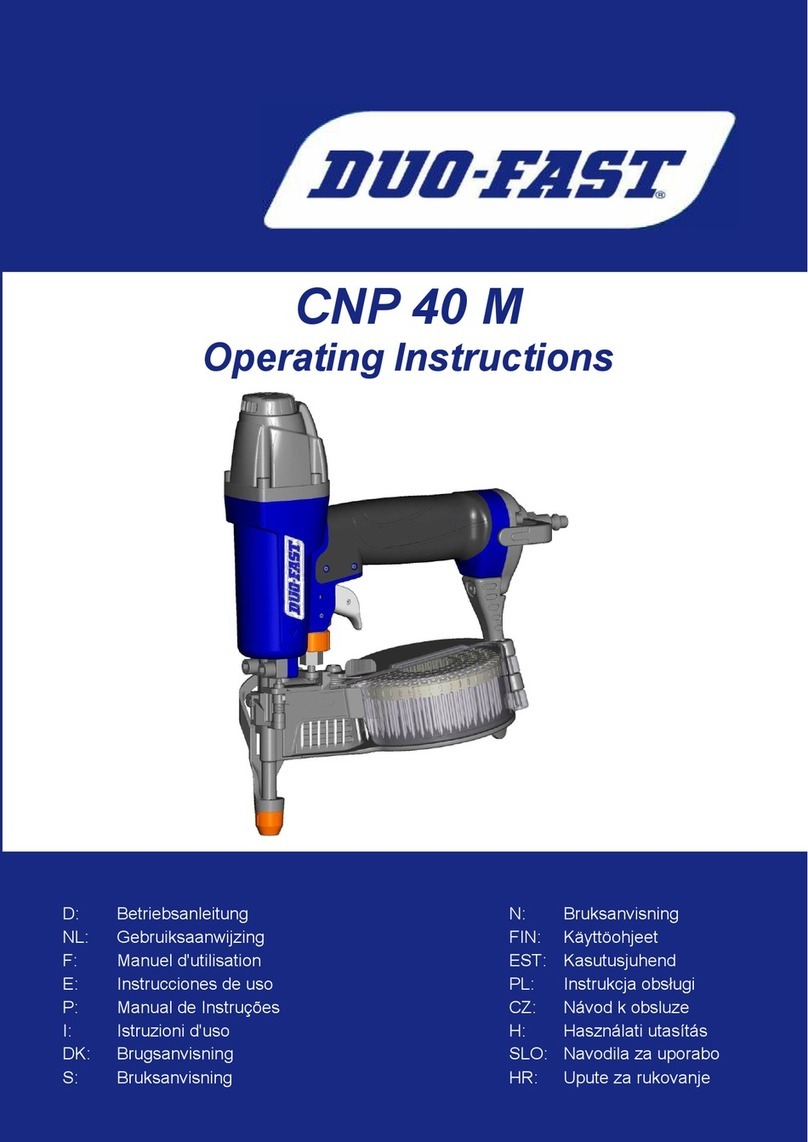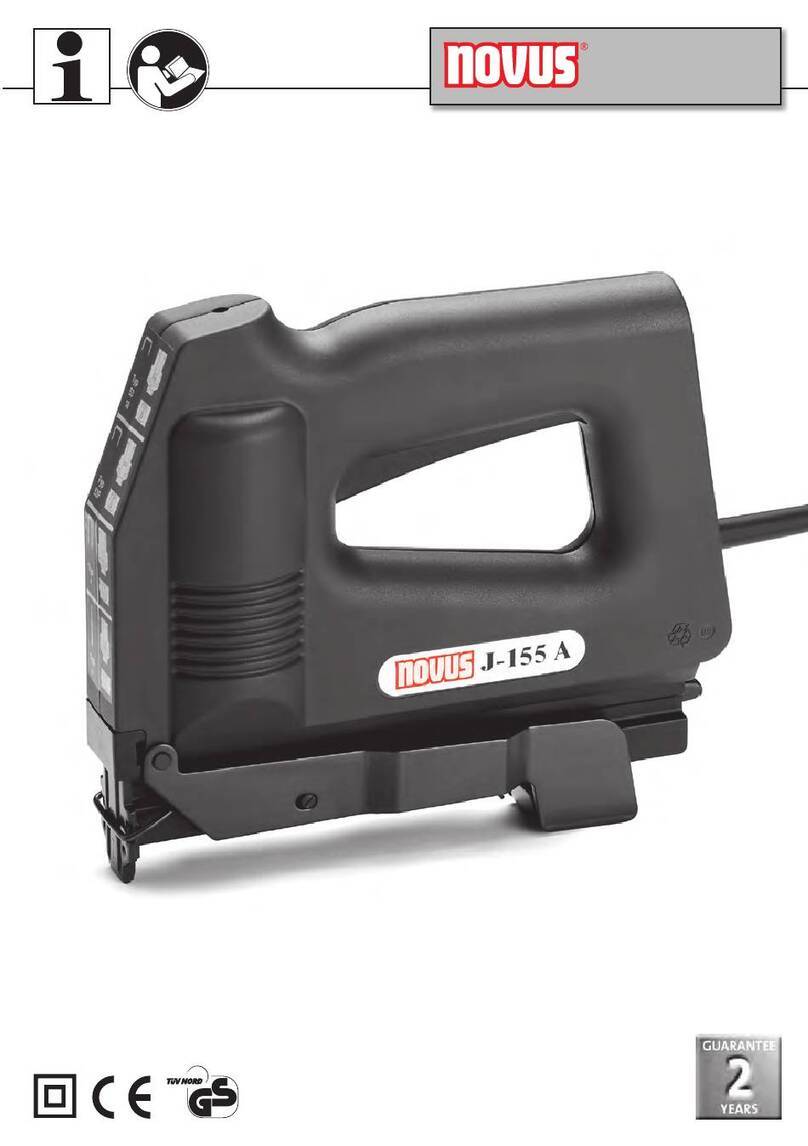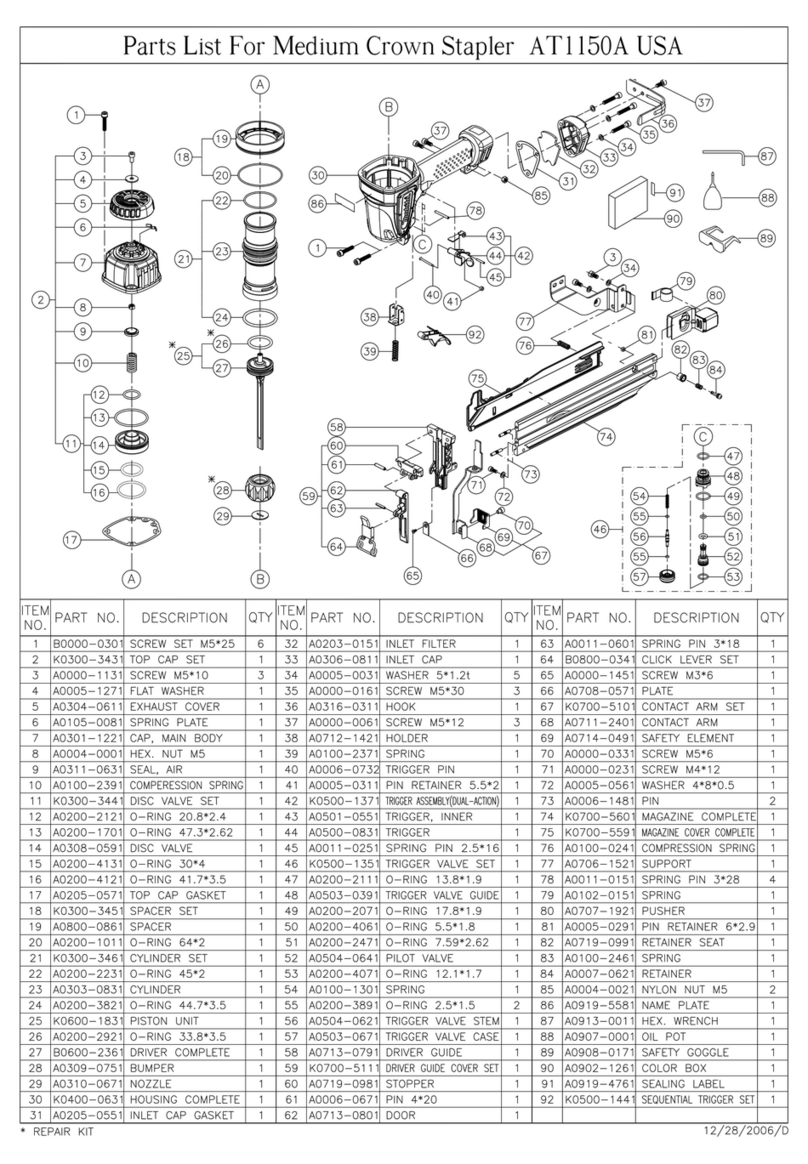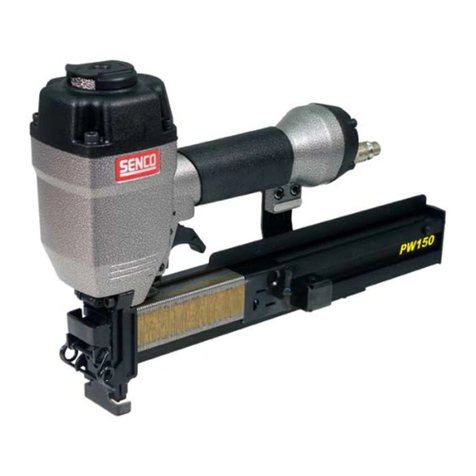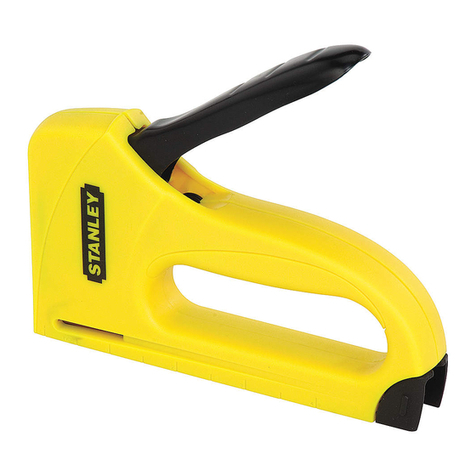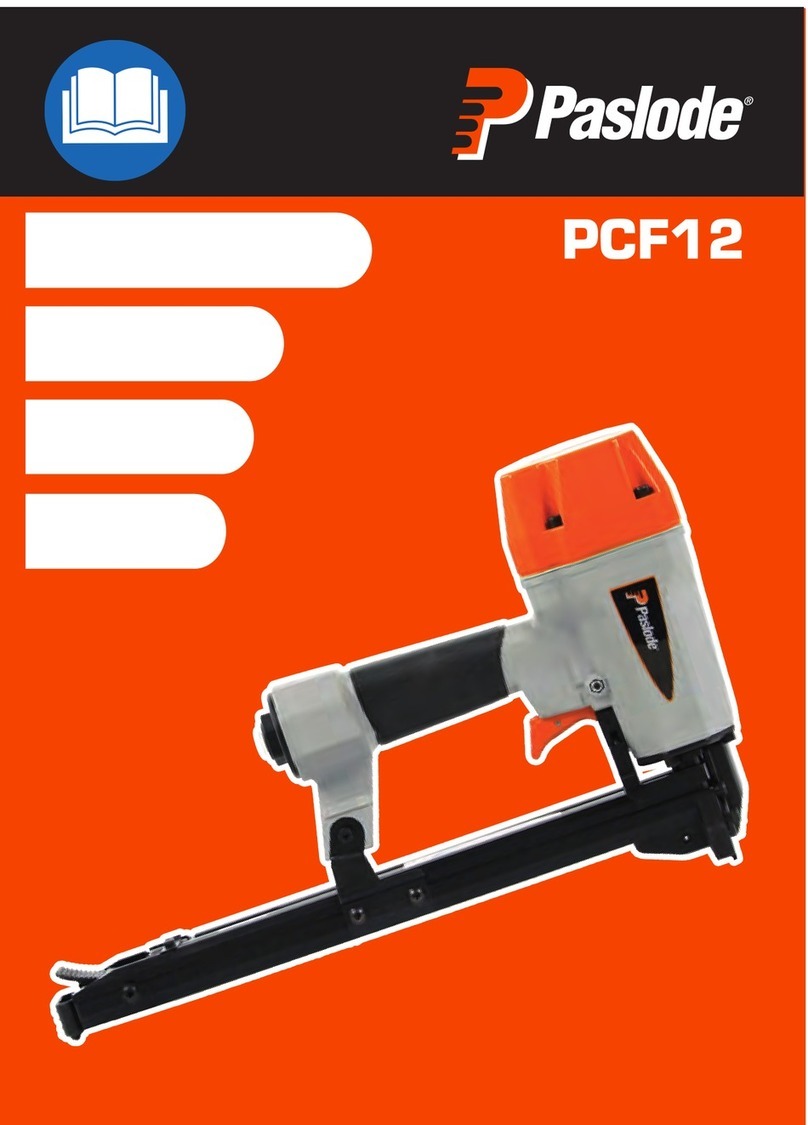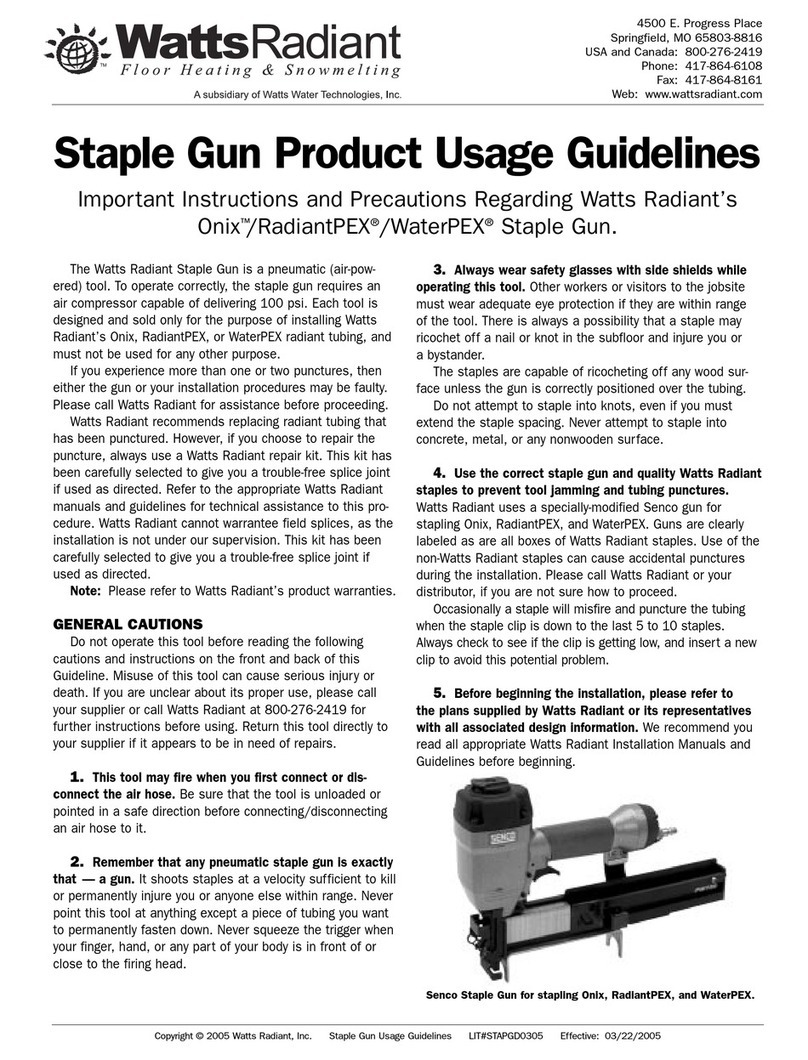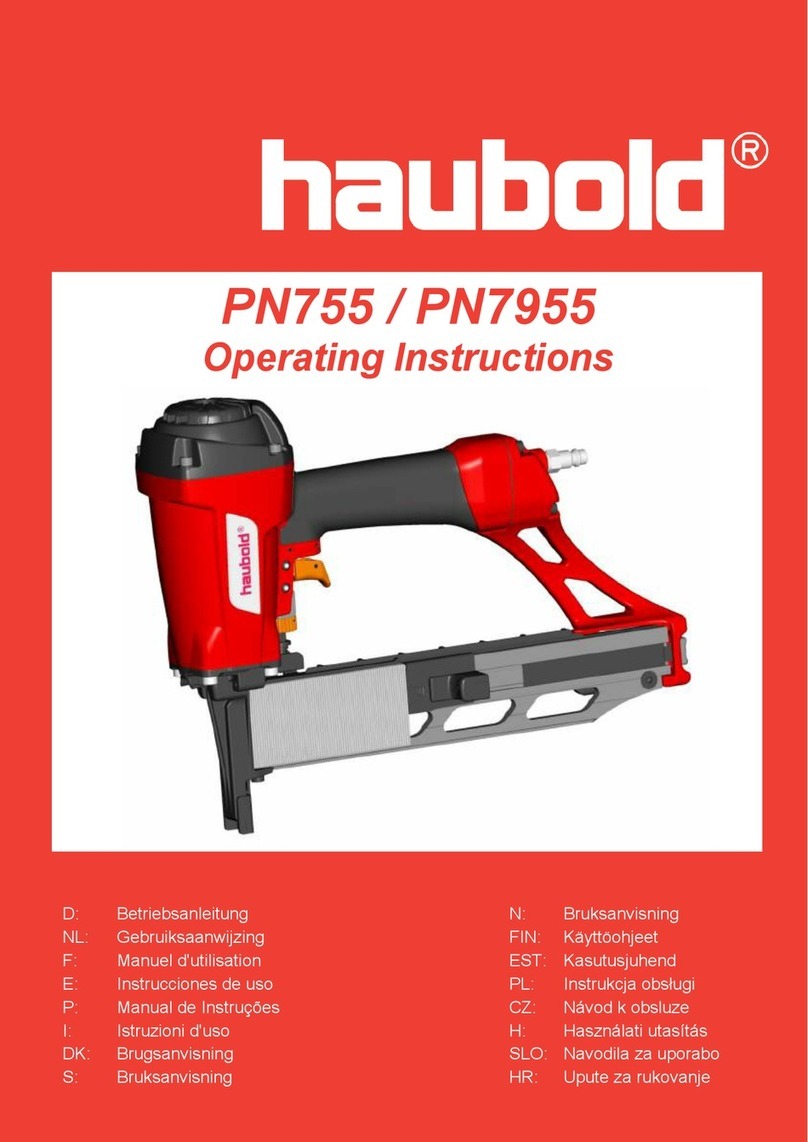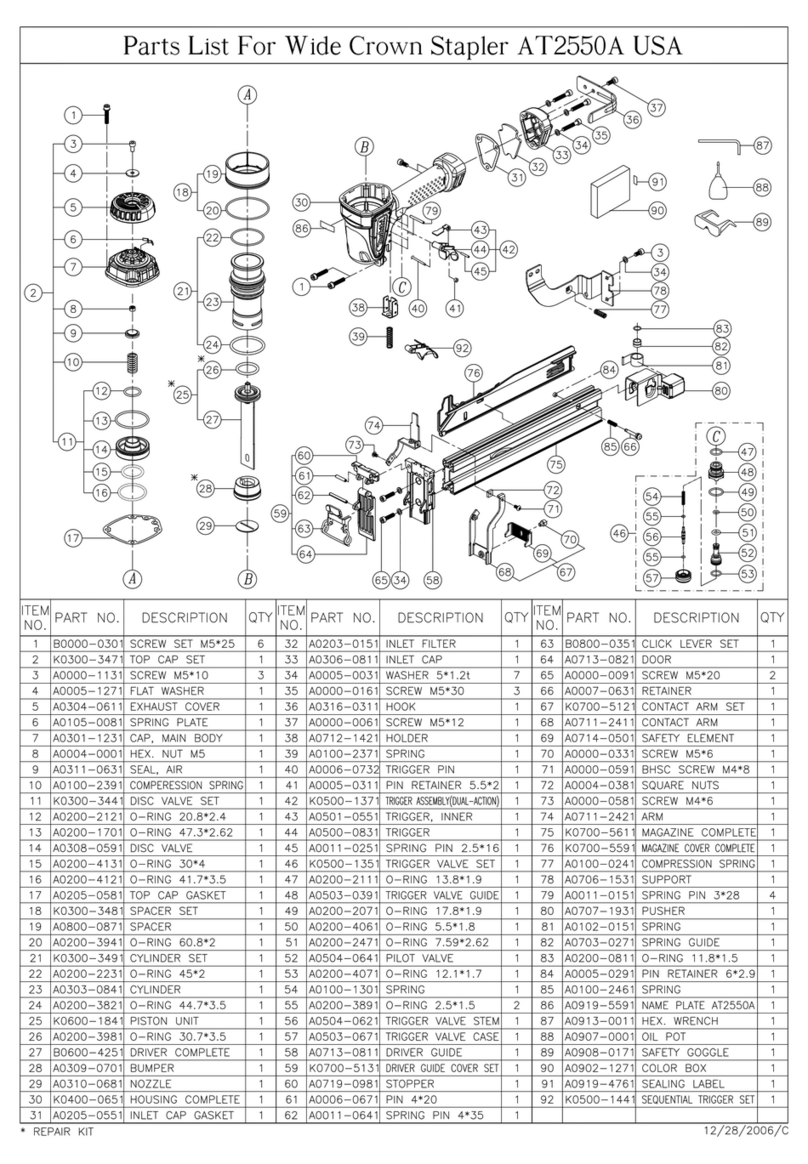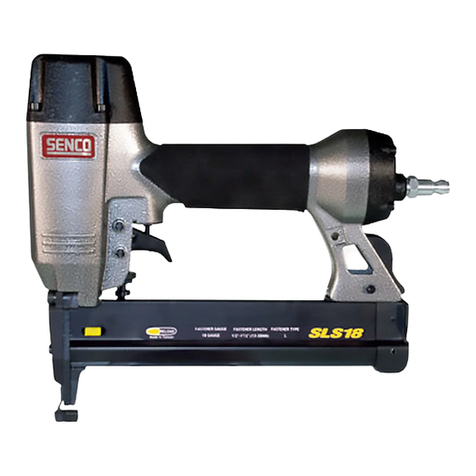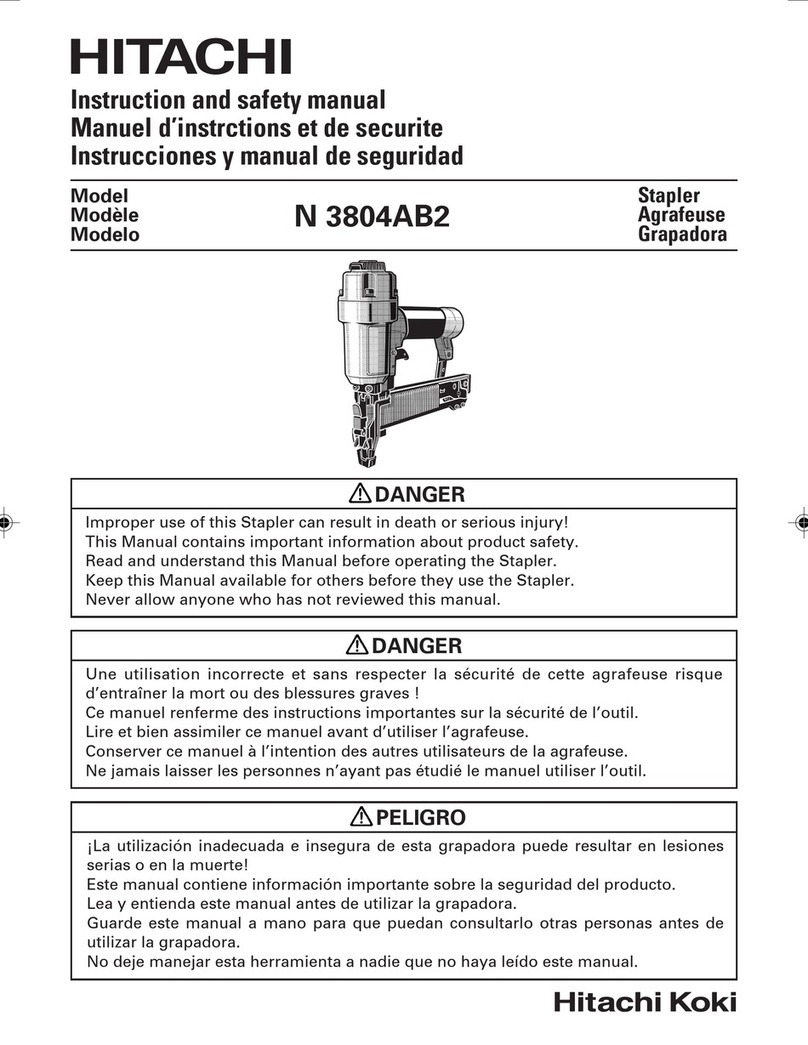
Never carry the tool by
the air hose or pull the
hose to move the tool or
a compressor. Keep hoses
away from heat, oil and
sharp edges. Replace any hose that is
damaged, weak or worn. Personal injury
or tool damage could occur.
Always assume the
tool contains
fasteners. Respect the tool as a working
implement; no horseplay. Always keep
others at a safe distance from the work
area in case of accidental discharge of
fasteners. Do not point the tool toward
yourself or anyone whether it contains
fasteners or not. Accidental triggering
of the tool could result in death or
serious personal injury.
Do not operate or allow
anyone else to operate
the tool if any warnings
or warning labels are not legible.
Warnings or warning labels are located
on the tool magazine and body.
Do not drop or
throw the tool.
Dropping or throwing the tool can
result in damage that will make the tool
unusable or unsafe. If the tool has been
dropped or thrown, examine the tool
closely for bent, cracked or broken parts
and air leaks. STOP and repair before
using or serious injury could occur.
Avoid using the
tool when the
magazine is empty. Accelerated wear on
the tool may occur.
Clean and check all
air supply hoses
and fittings before connecting the
tool to an air supply. Replace any
damaged or worn hoses or fittings.
Tool performance or durability may be
reduced.
SERVICE
a. Tool service must be performed only
by qualified repair personnel.
b. When servicing a tool, use only
identical replacement parts. Use
only authorized parts.
c. Use only the lubricants supplied
with the tool or specified by the
manufacturer.
Avoid long extended
periods of work
with the tool. Stop using the tool if you
feel pain in hands or arms.
TOOL USE AND CARE
a. Use clamps or another practical way
to secure and support the workpiece
to a stable platform. Holding the
work by hand or against the body is
unstable and is able to lead to loss
of control.
b. Do not force the tool. Use the
correct tool for the application. The
correct tool will do the job better
and safer at the rate for which the
tool is designed.
c. Do not use the tool if the switch
does not turn the tool on or off. Any
tool that cannot be controlled with
the switch is dangerous and must be
repaired.
d. Disconnect the tool from the
air source before making any
adjustments, changing accessories,
or storing the tool. Such preventive
safety measures reduce the risk of
starting the tool unintentionally.
e. Store the tool when it is idle out
of reach of children and other
untrained persons. A tool is
dangerous in the hands of untrained
users.
f. Maintain the tool with care. A
properly maintained tool reduces
the risk of problems and is easier to
control.
g. Check for misalignment or binding
of moving parts, breakage of parts,
and any other condition that affects
the tool’s operation. If damaged,
have the tool serviced before using.
Many accidents are caused by poorly
maintained tools. There is a risk of
bursting if the tool is damaged.
h. Use only accessories that are
identified by the manufacturer for
the specific tool model. Use of an
accessory not intended for use with
the specific tool model, increases the
risk of injury to persons.
i. Selecting an appropriate tool
actuation system, taking into
consideration the work application
for which the tool is used.
Never use
gasoline
or other flammable liquids
to clean the tool. Never use
the tool in the presence of
flammable liquids or gases. Vapors
could ignite by a spark and cause an
explosion which will result in death or
serious personal injury.
Do not remove, tamper
with, or otherwise cause
the trigger lock or trigger
to become inoperable. Do not operate
any tool which has been modified in a
like fashion. Death or serious personal
injury could result.
Do not touch the trigger
unless driving fasteners.
Never attach air line to
tool or carry tool while touching the
trigger. The tool could eject a fastener
which will result in death or serious
personal injury.
Always disconnect the
tool from the power
source when unattended,
performing any maintenance or repair,
clearing a jam, loading, unloading or
moving the tool to a new location. Do
not load the tool with fasteners when
the trigger is depressed. The tool could
eject a fastener causing death or serious
personal injury.
Always fit tool with a fitting near
the tool in such a manner that all
compressed air in the tool is discharged
at the time the fitting is disconnected.
Do not use a check valve or any other
fitting which allows air to remain in the
tool. Death or serious personal injury
could occur.
Never place hands or any
other body parts in the
fastener discharge area of
the tool. The tool might eject a fastener
and could result in death or serious
personal injury.
3
CHN10600
www.chpower.com
Important Safety Instructions
(Continued)
!WARNING
